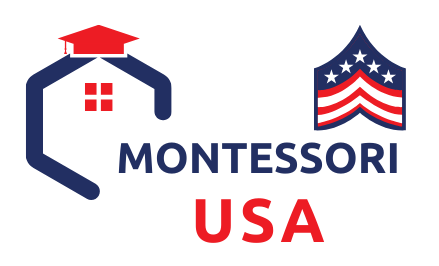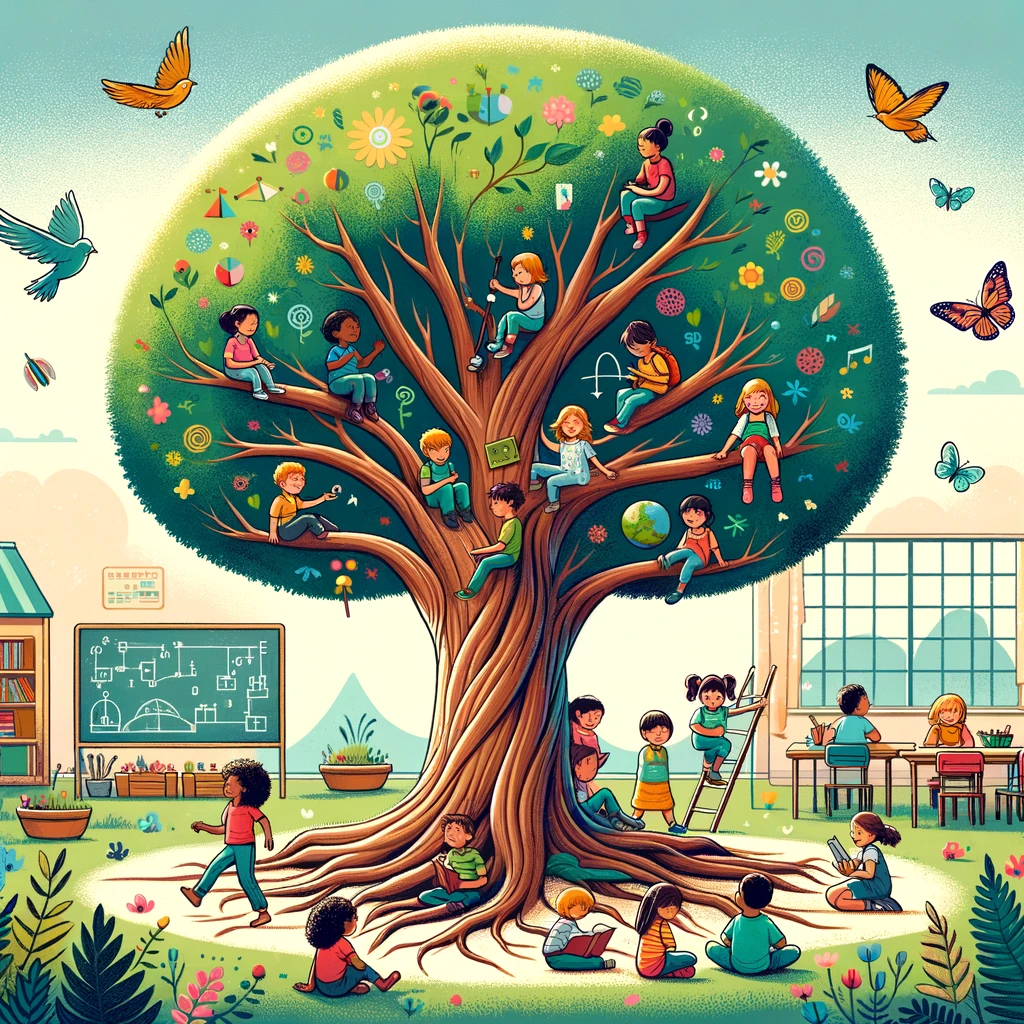If you are interested in Montessori education, you may have heard of the term “prepared environment”. But what does it mean and why is it so important? In this article, we will explain what is a prepared environment in Montessori, what are its principles and characteristics, how to create one at home, and what are its benefits for children.
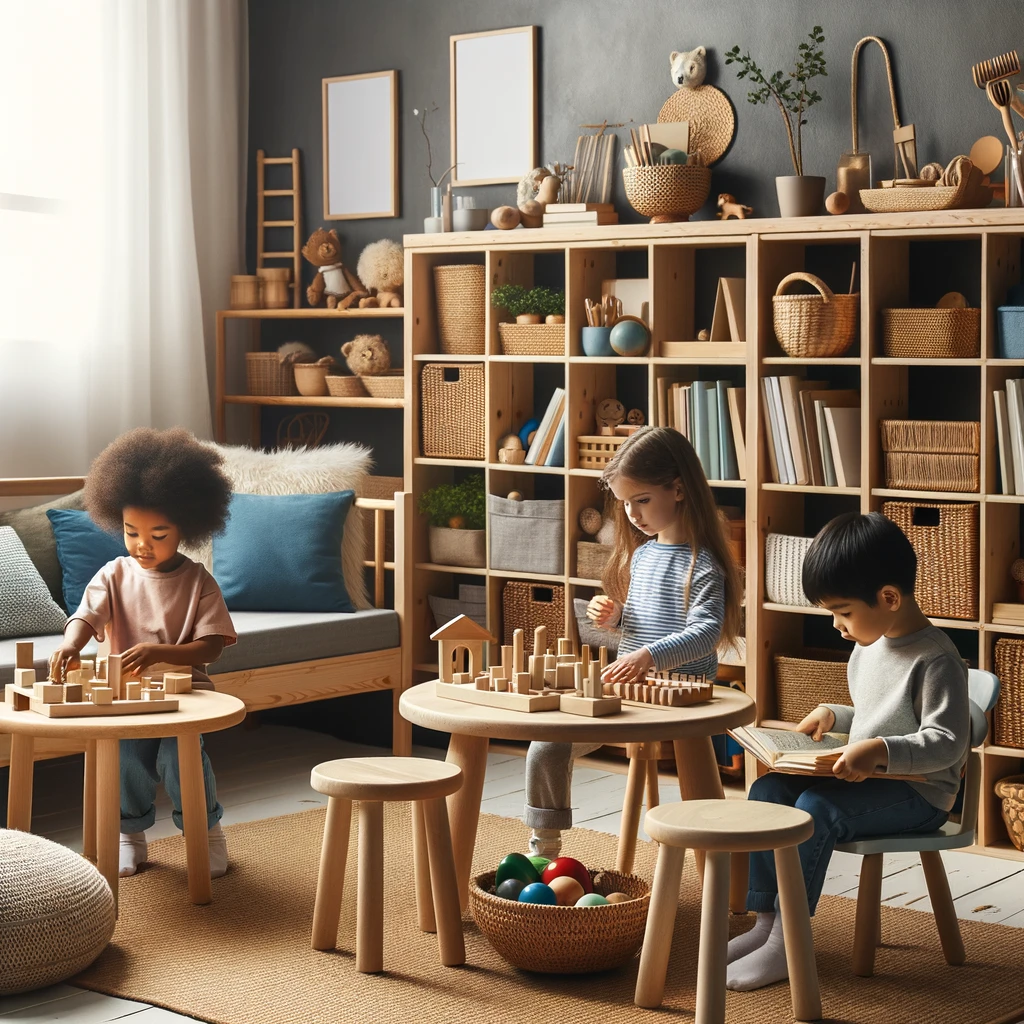
What is a Prepared Environment in Montessori?
A prepared environment is a key concept in Montessori education. It refers to a physical space that is designed to meet the developmental needs and interests of the children who use it. It is not just a classroom or a playroom, but a living and learning environment that supports the children’s natural curiosity, exploration, and discovery.
Maria Montessori, the founder of Montessori education, believed that children learn best when they are free to choose their own activities and work at their own pace. She observed that children have sensitive periods, which are windows of opportunity for learning specific skills or concepts. She also noticed that children have an absorbent mind, which means that they can absorb information from their surroundings effortlessly and unconsciously.
Based on these observations, she created the prepared environment to provide children with a rich and stimulating environment that offers them a variety of materials and activities that match their sensitive periods and absorbent mind. She also trained teachers to observe, guide, and facilitate the learning process of the children, without imposing or interfering with their choices.
The prepared environment is not static or fixed, but dynamic and flexible. It changes according to the needs and interests of the children, as well as the seasons and themes. It is also not limited to a specific age group or curriculum, but adapts to the different stages and areas of development of the children.
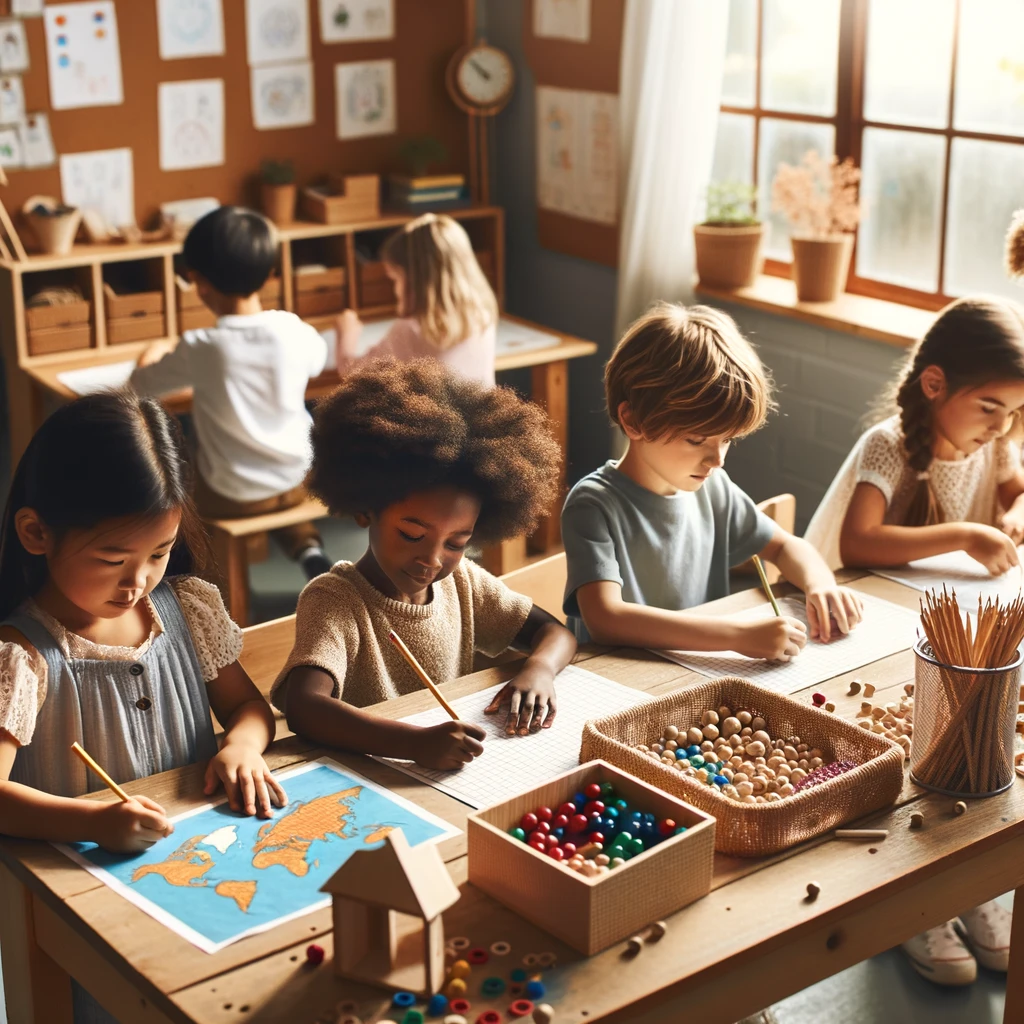
What are the 6 Principles of a Montessori Prepared Environment?
A Montessori prepared environment is based on six principles that guide its design and implementation. These principles are:
- Freedom: Freedom is the foundation of a Montessori prepared environment. It means that children have the freedom to choose their own activities, work at their own pace, and move around the environment as they wish. Freedom also implies responsibility, as children are expected to respect the rules, the materials, and each other.
- Structure and Order: Structure and order are essential for a Montessori prepared environment. They mean that the environment is organized, clean, and orderly, with everything having a specific place and purpose. Structure and order help children to orient themselves, to find what they need, and to develop a sense of logic and sequence.
- Beauty: Beauty is another important aspect of a Montessori prepared environment. It means that the environment is aesthetically pleasing, with natural materials, colors, and light. Beauty also refers to the harmony and balance of the environment, as well as the care and attention given to its maintenance.
- Nature and Reality: Nature and reality are key elements of a Montessori prepared environment. They mean that the environment is connected to the natural world, with plants, animals, and natural objects. Nature and reality also imply that the materials and activities are based on real-life situations and experiences, rather than abstract or artificial ones.
- Social Environment: Social environment is a vital component of a Montessori prepared environment. It means that the environment fosters social interaction, cooperation, and collaboration among children of different ages and abilities. Social environment also encourages respect, empathy, and diversity among children and adults.
- Intellectual Environment: Intellectual environment is the final principle of a Montessori prepared environment. It means that the environment stimulates intellectual development, with materials and activities that cover various areas of knowledge and skills. Intellectual environment also supports creativity, curiosity, and exploration among children.
These six principles are interrelated and interdependent, creating a holistic and integrated learning environment for children.

How to Create a Montessori Prepared Environment at Home
Creating a Montessori prepared environment at home may seem daunting, but it is not impossible. You do not need to buy expensive furniture or materials, or to transform your entire house into a Montessori classroom. You can start with a few simple steps and gradually adapt your home to suit your child’s needs and interests. Here are some tips to help you create a Montessori prepared environment at home:
- Choose a suitable space: You can choose any room or area in your home that is safe, spacious, and accessible for your child. It can be a bedroom, a living room, a playroom, or even a corner. The important thing is that the space is dedicated to your child’s learning and development, and that it is free from distractions and clutter.
- Arrange the furniture: You can use the furniture that you already have, or buy some new pieces that are child-sized and child-friendly. The furniture should be low, sturdy, and comfortable for your child to use. You can also add some shelves, baskets, trays, and hooks to store and display the materials and activities. The furniture should be arranged in a way that creates a clear and logical layout of the space, with different areas for different purposes.
- Select the materials: You can use the materials that you already have, or buy some new ones that are appropriate for your child’s age and stage of development. The materials should be natural, durable, and attractive for your child. They should also be varied, challenging, and self-correcting, meaning that they allow your child to check their own work and learn from their mistakes. You can find many Montessori materials online or in specialized stores, or you can make some yourself using everyday objects.
- Organize the activities: You can organize the activities according to the different areas of learning that Montessori covers, such as practical life, sensorial, language, math, and cultural. You can also include some activities that reflect your child’s interests and hobbies, such as art, music, or sports. You should offer your child a reasonable number of activities at a time, depending on their attention span and skill level. You should also rotate the activities regularly to keep your child engaged and motivated.
- Maintain the environment: You can maintain the environment by keeping it clean, tidy, and orderly. You can also involve your child in the maintenance process by teaching them how to use, care for, and put away the materials and activities. You can also observe your child’s behavior and progress in the environment, and make adjustments as needed.
By following these tips, you can create a Montessori prepared environment at home that will support your child’s learning and development in a fun and natural way.
Benefits of a Montessori Prepared Environment for Children
A Montessori prepared environment has many benefits for children’s learning and development. Some of these benefits are:
- It fosters independence: A Montessori prepared environment allows children to work independently without constant supervision or intervention from adults. Children can choose their own activities, set their own goals, and manage their own time. This helps them to develop self-confidence, self-reliance, and self-discipline.
- It promotes concentration: A Montessori-prepared environment encourages children to focus on one activity at a time without distractions or interruptions. Children can work at their own pace and follow their own interests. This helps them to develop concentration, attention, and persistence.
- It stimulates curiosity: A Montessori-prepared environment provides children with a rich and stimulating environment that sparks their curiosity and exploration. Children can discover new things, ask questions, and seek answers. This helps them to develop curiosity, creativity, and critical thinking.
- It supports diversity: A Montessori-prepared environment respects and celebrates the diversity of children’s personalities, abilities, and backgrounds. Children can work with others who are different from them and learn from their perspectives and experiences. This helps them to develop respect, empathy, and social skills.
- It prepares for life: A Montessori-prepared environment prepares children for life by giving them the skills and knowledge they need to succeed in the real world. Children can learn practical skills, such as cooking, cleaning, or gardening. They can also learn academic skills, such as reading, writing, or math. They can also learn cultural skills, such as geography, history, or science. This helps them to develop a holistic and integrated understanding of themselves and the world.
These are some of the benefits of a Montessori-prepared environment for children. By creating such an environment at home, you can support your child’s learning and development in a fun and natural way.
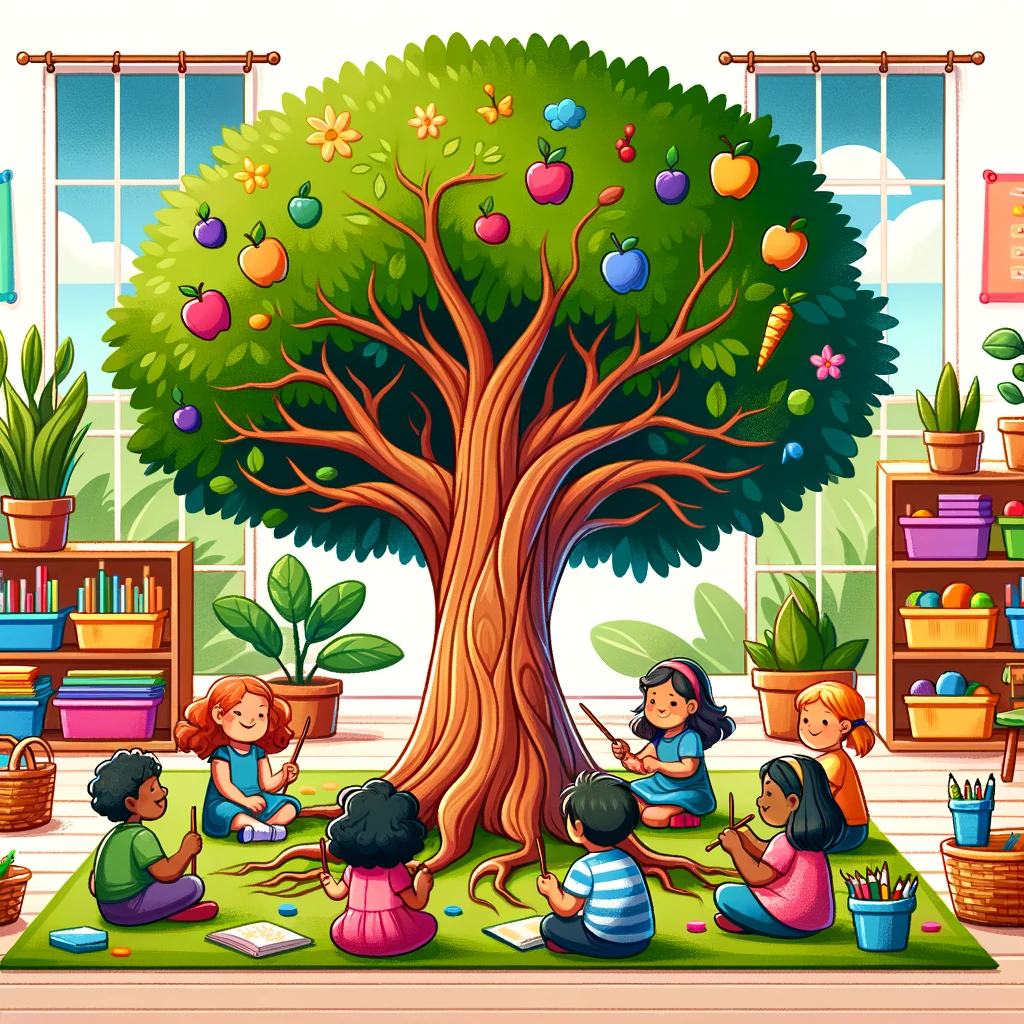
Conclusion
In this article, we have explained what a prepared environment is in Montessori education, what are its principles and characteristics, how to create one at home, and what are its benefits for children. We hope this article has given you some insights and inspiration to create your own Montessori-prepared environment at home.
If you have any questions or comments about this article, please share them with us. We would love to hear from you.
Thank you for reading!
